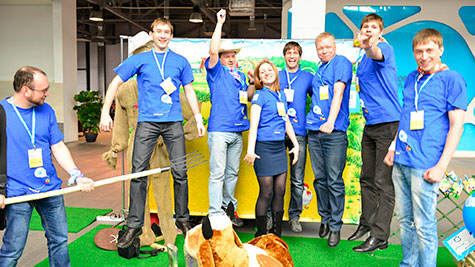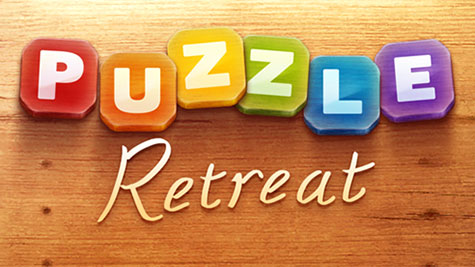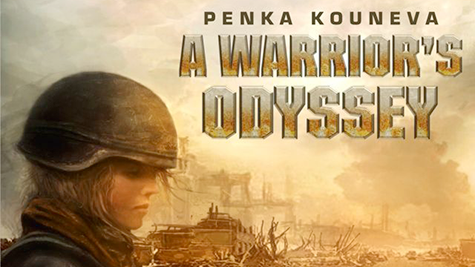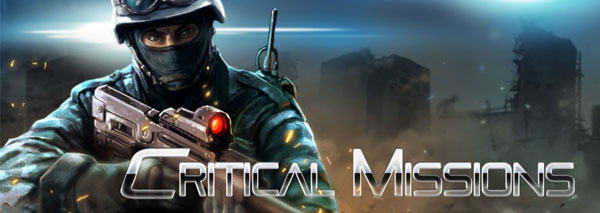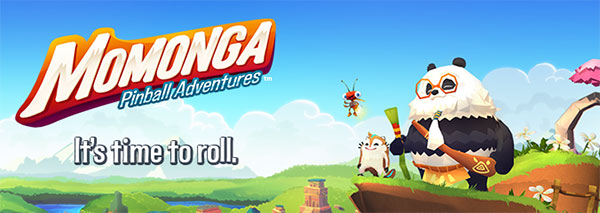Winning Blimp specializes in science-fiction themed games with a 16-bit era flavor. Based in both Osaka, Japan and Florida, USA, Winning Blimp was founded in 2012 and is headed by Bear Trickey, a former game designer from Kyoto-based studio Q-Games, and Alex May, a multi-discipline graphic artist and musician. Alex May tells the story of Mosaique, a cerebral puzzle game.
The Birth Of The Blimp
Mosaique was a critical project for us as a team, as its development runs parallel with the formation of our company and solidified an excellent collaborative relationship between us as developers. Despite Mosaique being our second title, it was actually the first game prototype that we worked on together. Bear had been toying with a simple mechanic that involved a shooting device that traveled around a spline and shot projectiles at various obstacles, somewhat like an orthographic Tempest.
Bear was working with an old iPod Touch at the time and was having difficulty with the layout logistics of the smaller screen. It just wasn’t possible to get both controls and captivating level design into that small screen area. He decided to shift the concept from an action game to something more cerebral, his hope being that the puzzle genre might accommodate the limited screen area better. This resulted in the next prototype; the shooting device was now rotating around a square grid and the objective was to shoot objects in the middle with a limited number of shots.
This was the first prototype that Bear showed me, and incidentally the catalyst for the beginning of our relationship. Like many other game companies, it all started with a “Hey, could you help me out with some graphics for this?” The Blimp was born.
Without any concrete ideas for the context, we just threw together a quick placeholder virus-buster type setting where you control some kind of TRON-like unit zapping viruses on a grid. Highly unoriginal, but as Bear says, sometimes it pays to just jump first and think next. We coined the name “VRAXIS”, which was a mash-up of “Virtual” and “Axis”. I knocked up some quick graphics to get some momentum going.
For about two months, we wrestled with this idea, but it was like a greasy pig, constantly slipping from our grasp. After numerous iterations, we just couldn’t seem to find a good direction to take “VRAXIS”. Bear experimented with ideas involving disappearing and reappearing targets as well as a few other quirky twists, but in the end, we concluded it was all just feeling too ordinary. Who knew that Blimp cockpits had shelves that were so handy for storing sad, failed prototypes.
From The Ashes Of A Brick-Breaker
One day during a session working on “VRAXIS”, a frustrated and distracted Bear was struck with an idea for an action game that was a mixture of Pong and Breakout: a dual-paddled brick-breaker game that was played on a vertically scrolling play field. Bear showed me a loose prototype, and we both agreed that this idea had the potential to become something great. Our first pivot ensued (airships can turn really quickly when they need to, you know). For whatever reason, ideas came fast, and before we knew it we were releasing our first ever title: Ambi-ON.
Ambi-ON was less than successful. We had produced a game that looked good enough, had a killer soundtrack, and played well, but due to a few key shortcomings in the game design, too little effort put into marketing, a lack of practical experience with freemium models, and perhaps just a general lack of attention for the entire brick-breaker genre itself, Ambi-ON simply failed to secure any lasting attention.
This was the birth of Mosaique. Frustrated that our beloved Ambi-ON failed to garner any popularity, we wanted to seek revenge on the entire industry and create Ambi-ON‘s exact mirror image; an “anti-Ambi-ON” if you will. Where Ambi-ON was a dark action game with a particularly sadistic tone (it even has an “Ultimate Pain Mode,” as well as a cyborg that pops up to insult you and all humankind at Game Over), it was only fitting that Ambi-ON‘s opposite should be something that was serene, calm and light. We concluded that with some judicious massaging, “VRAXIS” had the potential to become this. Back onto the workbench it came.
Our Music-First Approach
For no particular reason, during Ambi-ON‘s development, I actually created the music first. As it turned out, doing it that way served us very well. We found that using music as a guide to keeping the various elements of the game consistent was actually extremely effective. Compared to post-it notes on a whiteboard or concept art, music has a far stronger capability to evoke emotion, and it’s that emotion that can be used as a compass to guide the design of a gaming experience. In addition, centering a game around the music also makes the planning and tweaking of game pace and momentum very easy. To fit with the profile of being Ambi-ON‘s opposite, I created a 10 minute long semi-ambient electronica track in 5/4, aiming for a peaceful, sophisticated and also accessible feel. This would become the spine of the game.
Bear started to work through ideas for puzzle mechanics that were more relaxing and fitting with the music. A game that came to his mind was one of his old SNES favorites Zoop, which had a great colour-matching mechanic, but was time-based and very stressful. He injected that Zoop colour-matching mechanic into “VRAXIS”, but left out the other white-knuckle aspects of the system. Our game was to have no time limit and very little pressure put on the player, but still needed some way to get a Game Over. We resurrected the original limited shot count idea from “VRAXIS”, and added it as a gauge style shot counter.
In line with the music, the mantra was “sophisticated yet accessible”. Puzzle games are all too often totally abstract (with good reason, in most cases), so to retain some sense of accessibility, we decided to ground the visual interface firmly in reality. This called for a design that resembled an actual hardware device instead of a software interface. The idea was that you would hold in your hand an actual functioning puzzle game, not a mobile phone running puzzle game software. This was the result:
Further tweaks were made to the colour scheme to pull it closer to the music’s slight tinge of sadness and melancholy. And finally, the name “VRAXIS” had to go. It was an awkward remnant of the old setting. We decided on the name Mosaique, intentionally choosing the French spelling for no other reason than it feeling more sophisticated to us (you guessed it, neither of us speak French) without seeming inaccessible or foreign.
The core mechanic to the game was completed, the music was done and the interface was in place. Unfortunately it was at this late stage that we realized this game would be a great experience once, but didn’t inspire much incentive for replay. Bear then had the idea of introducing a mechanism that would encourage the player to play the game every consecutive day for bonuses. As the game was completable in 10-minutes (to match the length of the soundtrack), this was the perfect complement. The short game length would impart little burden on the player’s daily schedule, and directly giving them incentive to play just a bit every day would keep them coming back.
Again, as a reaction to our inability to create a successful freemium game in Ambi-ON, Mosaique was to be proudly premium. 99¢ would buy you the entire experience. No limitations, no wallet-fondling, just good old fashioned value for money.
Mosaique Takes Flight
The release of Mosaique went extremely well. It was featured on a number of high profile sites (including Gamespot, C-NET, Joystiq, Gamezebo, and Touch Arcade), and also had a consecutive run of three weeks on or near the top of Apple’s App Store (New & Noteworthy, What’s Hot and Popular Puzzlers). Also, this:
Yes, that is Mosaique in Craig Federighi‘s demo of iOS7 during the Apple’s 2013 WWDC Keynote. Of course, an accolade like this does not lead to much in the way of downloads (who would see that screen and then go and buy the apps on it?!), but it certainly was a thrill for us and makes for a great story.
The 99¢ price point has meant that Mosaique hasn’t been hugely profitable, although it has successfully recouped all of our marketing costs. Regardless, we are simply happy to have achieved some modest success with a “proudly premium” game in the casual puzzler genre; a genre that is so saturated with high quality freemium alternatives. It’s also been a deeply gratifying experience having some degree of popularity for something we created together. It showed us that there is merit in the process we followed, and also great potential for the future of our creative relationship.
Patience is a Virtue
There was one interesting road bump in our development process for Mosaique: when you follow a process that involves a rough playable prototype that is eventually refined with finalized graphics, do not lock down the graphics too early. If there is any additional work required on the prototype to improve user experience, game features or replayability, by adding final graphics too soon, all you are doing is creating inflexibility and possibly reluctance to consider all options.
The visual and interactive elements of Mosaique were all fully formed at the time we realised the game needed more replay incentive. Had the game still been in a light, flexible and adaptable prototype stage, I’m sure that there would have been potential for a far greater range of solutions to the problem of replayability, and also greater freedom for brainstorming.
So for our future games, we intend to try and complete a fully encapsulated prototype prior to adding any finalised graphics. Hopefully this way, all the core elements of the game will be more visible without the distraction of pretty graphics, and drastic changes can be more efficiently applied if necessary.
Winning Blimp is gravitating towards platforms that are conducive to more interactive bandwidth and extended play sessions. They are always looking to connect with players, developers, and artists, so feel free to get in touch through Facebook or Twitter.

